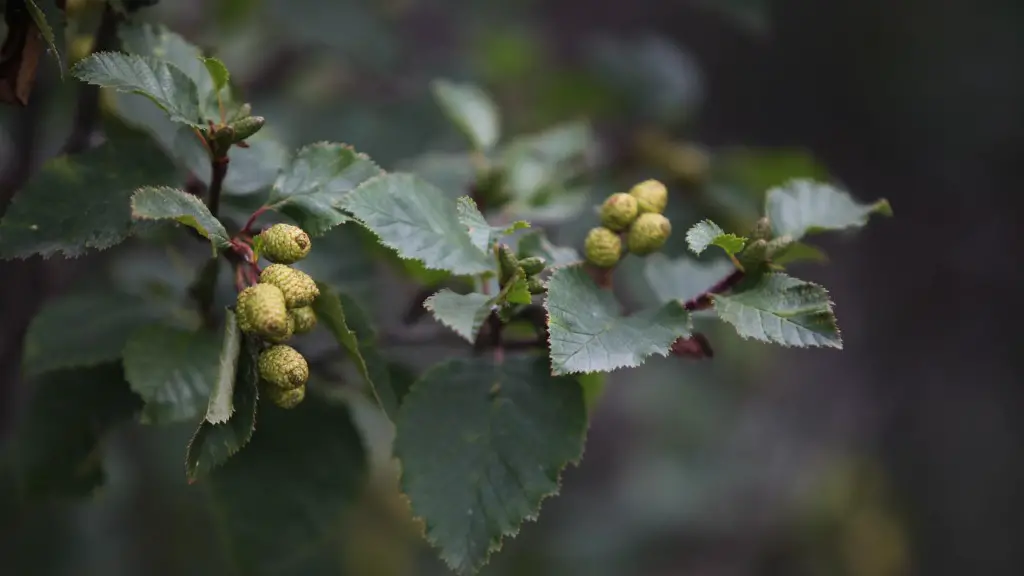Avocado trees are incredibly rewarding plants and can provide you with delicious fruit for years once established. Growing an avocado tree is a relatively simple endeavor and can be done from an avocado pit. Imagine the pride you will feel when your avocado tree bears fruit! Here’s how to start an avocado tree from a pit.
Firstly, the pit must be removed from the avocado fruit. Carefully slice the fruit in half and tap the pit with the back of a spoon to remove it. Rinse off the pit’s fibrous material, which will make it easier to handle.
You’ll need to coax the pit to germinate, which you can do by suspending it over a jar of water. Use four toothpicks to do this. Space the toothpicks around the circumference of the pit and pierce the pit’s long axis. Balance the pit over the water jar with the pointed end of the pit placed facing down. Change the water every three days.
In seven to twelve days, a root should form from the bottom of the pit. In the following weeks, a small shoot will emerge from the other end of the pit. Until the seedling is planted in soil, the avocado pit needs to remain in water. When the seedling reaches six inches tall, it’s time to plant it in soil.
In its natural environment, avocado tree roots will spread far and wide as the tree searches for water, so be sure to use a pot that’s at least twenty-four inches deep. The roots of an avocado tree will eventually grow to fifteen inches deep, so a wide pot is the best choice. Be sure to use loam soil, which has the proper combination of air pockets, organic matter and drainage.
When transferring the pit to soil, be sure to leave the top of the pit exposed to allow for proper root development. Place the pot in direct sunlight, or closer to a sun-lit window, and water the soil when it begins to feel dry.
Once you’ve planted the pit, the tree will require a bit of patience and care. Avoid extreme temperatures and direct wind, as those can both be detriments to the tree’s growth. Avocado trees require a lot of sunlight and don’t tolerate shade well. Avocado trees can also be sensitive to fertilizer, so it’s best to avoid it as a precaution.
Taking Care Of Your Avocado Tree
As the avocado tree grows, you will need to prune it in order to direct and maximize its growth. Prune away thick or crossed branches, or any dead wood, and use the collected material to fertilize the soil.
Your avocado tree will eventually produce flowers, whose bi-gender nature will be recognizable if you look closely. The female flowers need pollination in order to bear fruit, so it’s not a bad idea to shake the tree gently to encourage the pollinators, such as bees, to get to work.
This is most easily done with trees planted in pots which can be moved to different locations, as this will help the pollinators find the avocado flowers. In the event that your tree isn’t pollinated, you can do it yourself with a small paintbrush.
If pollination is successful, you should eventually notice the formations of fruits on the tree. Pick the fruits when they are fully formed and dark green, leaving several inches on the stem. Avocados will require several weeks of ripening, so be patient and store them in the fridge when they’ve reached the desired color and size.
What To Do When Beans Are Produced?
If, while picking your avocado fruits, you find a bean-like structure, it’s because the flowers have been self-pollinated by the tree. It is an unusual phenomenon, as avocado trees usually require bi-gender flowers for pollination.
In this case, the bean must be gently removed from the fruit without destroying its delicate structure. If done correctly, the bean can then be planted in water or soil and will begin to grow.
After five or six weeks, the bean should produce a few roots and the now-familiar shoot. It will require warmth and moisture in order to grow, and its development can be quickened with fertilized soil or compost.
The seedling should be replanted in its own pot when it’s no more than eight inches tall. You must be careful not to damage the single root when transferring the seedling, as this could stunt its growth.
Conclusion of Transplanting & Growing
Once transplanted, the seedling should receive sunlight, air and water in moderate quantities. Sparing use of fertilizer is okay, but should always be done following the instructions indicated on the product. The soil should be kept slightly moist and the seedling should require repotting twice a year until it reaches its optimum size.
Keep in mind that contamination of the soil is possible if the tree is in some way diseased. The best way to avoid contamination of healthy soil is to use disease-resistant species.
The avocado tree is a rewarding and fascinating species that is sure to bring joy when it bears fruit. Germinating the seed and raising a tree from it can create a special bond between you and your tree, and it can be immensely satisfying once it begins to bear fruit. Now that you know how to start an avocado tree from a pit, you’re ready to get growing!
Keeping Avocado Tree Healthy & Safe
In order to promote your tree’s growth and safety, avocado trees should be exposed to air circulation, as this helps prevent the onset of diseases. Strong winds, however, can damage the tree, so it’s best to avoid locations that are prone to strong gusts. The tree should be placed in a location that is well-lit, but not exposed to direct sunlight during the hottest part of the day.
As for pests, unfortunately avocados can sometimes be a target for pests such as caterpillars, snails and aphids, leaving the foliage of your tree damaged or destroyed.
If you notice a pest infestation, treat it as soon as possible. Start by using a mixture of water and natural insecticides, such as soap or neem, to get rid of the majority of the pests. Then, pick the problematic pests off the leaves, paying special attention to their eggs and larvae.
Adding beneficial insects, such as ladybugs, can help keep the pest population in check. These natural predators will hunt and consume the pests, aiding in the preservation of your tree’s foliage.
Water Requirements of an Avocado Tree
Water is one of the most important requirements for keeping your avocado tree healthy and productive. An avocado tree should be watered slowly and deeply in order to saturate its wide and far-reaching root system. Water the tree near its trunk and wait until the soil has dried out before watering again.
Water stress can affect the health of an avocado tree, which can weaken the foliage while delaying or preventing fruit production. To avoid this, make sure to check the soil’s dryness to get an idea of when your tree needs to be watered.
When the weather is hotter and drier, it’s best to provide more water and to keep the tree’s soil moist. During the winter, once the tree has entered its dormant period, it will need considerably less water as its growth has slowed down.
Signs of Avocado Tree Stress
Always watch out for signs of stress, as they may indicate an issue that needs to be addressed. Avocado trees are susceptible to environmental and nutritional conditions that may, if not treated, stunt the tree’s growth or, in extreme cases, kill it.
Common symptoms of stress to watch out for include a yellowing and dropping of leaves, discoloration of the foliage, and/or the presence of pests. Other signs of stress may include poor fruit production, poor leaf growth and/or discolorations in the fruit.
If you have noticed any of these signs, get a soil test to determine the nutritional needs of the tree. After getting your results, you can apply the amendments needed and tackle the underlying issue.
Fighting The Cold
Making sure your avocado tree is protected from the cold is important, especially during the winter. Avocado trees thrive in temperatures between 70 and 80 degrees Fahrenheit and should be protected when temperatures dip below 50 degrees Fahrenheit.
You can either move the tree indoors, or use row covers or other clothing to protect it from the cold if needed. Fortunately, with a bit of care and attention, you can ensure your avocado tree will thrive and produce delicious fruit for years.



